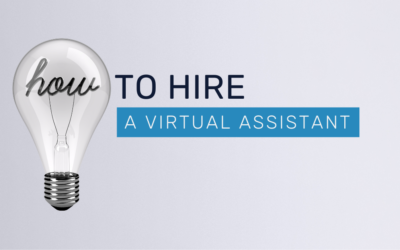Does paperwork pile high while emails pour in? Do you find your team juggling too many tasks without enough clarity or coordination? As a small business owner, an unwieldy workflow can leave you stressed and your company stalled. But what if optimizing your processes could unlock newfound efficiency, freeing you from the chaos?
Like a river carving an efficient path, your workflow must channel work through your organization smoothly. Assessing and enhancing it now releases bottlenecks to increase productivity and profits down the line. From clarifying employee roles to leveraging technology, we’ll explore tactics tailored to your growing small business.
You’re just steps away from implementing systems that minimize busy work and maximize results. Right here you’ll discover how to understand and upgrade your workflow – opening up space for you to handle higher priorities. The path to less frustration and more success awaits.
Join us on the journey toward workflow optimization and take your small business to the next level!
Part 1: Assessing Your Current Workflow

Mapping Your Current Workflow
The first step in optimizing your small business workflows is to map out your current processes from start to finish. Visualizing your workflows is crucial for identifying bottlenecks, redundancies, and opportunities for improvement.
There are a variety of techniques you can use:
- Flowcharts – Draw a flowchart showing each step in the process. Connect steps with arrows indicating flow and direction. Highlight pain points or delays. Simple flowcharts can be drawn on whiteboards or paper, while software like Lucidchart provides advanced flowcharting tools.
- Swimlane diagrams – Use columns or “swimlanes” to represent who does each step in the workflow. This highlights hand-offs between teams or employees. Swimlane diagrams are easy to create in Microsoft Word or Excel.
- Value stream mapping – Map every process step along with data like time required, resources used, and value-added. This quantifies waste and opportunities. Value stream mapping integrates well with Lean and Six Sigma.
- Process mapping – Document process steps sequentially showing dependencies and decision points. Process mapping software like Miro allows real-time collaboration for teams.
- Spaghetti diagrams – Map the physical flow of people, materials, or information through your workspace visually. This highlights transportation waste and layout inefficiencies.
Thoroughly mapping and visualizing your current workflows removes assumptions. It provides the foundation for future optimization efforts based on real data and visibility into your processes, bottlenecks, and pain points.
Identifying Bottlenecks and Inefficiencies
As you map out your current workflow and gather employee feedback, pay attention to areas that commonly create bottlenecks and inefficiencies:
- Communication breakdowns – Things like unclear responsibilities, lack of cross-functional coordination, and issues with handing off tasks can grind workflows to a halt. Look for any gaps or ambiguities in communication.
- Unclear processes – When procedures are not well-defined or documented, employees may not know exactly what they are supposed to do. This causes delays and mistakes. Review processes to identify any unclear steps.
- Too many manual tasks – Relying on manual work instead of automation can significantly slow things down and introduce errors. Spot any places where technology could streamline manual efforts.
- Overburdened team members – If certain employees constantly have full plates, that’s a bottleneck. Redistribute workloads to alleviate pressure points.
- Disconnected systems – When data and workflows don’t flow smoothly between disparate tools and software, everything slows down. Seek ways to integrate systems and centralize information.
Dig into these common problem areas as you analyze your current workflows. Mapping workflows visually can help to quickly spot bottlenecks.
Gathering feedback directly from employees on the frontlines is also invaluable since they will have firsthand experience of pain points and inefficiencies. Addressing these bottlenecks through workflow optimization should be a top priority for fueling your small business growth.
Gathering Employee Feedback
Employees on the front lines often have the clearest insight into workflow inefficiencies and pain points. Their perspectives are invaluable for identifying issues that may not be apparent from higher levels. There are several methods for soliciting productive feedback:
1. Employee Surveys
Well-designed surveys with both multiple-choice and open-ended questions can uncover employee attitudes and gather data. Keep surveys focused on workflow, anonymize responses, and provide analysis of results. Online survey tools make this easy to administer regularly.
2. One-on-One Interviews
Interviews allow managers to have in-depth, two-way conversations about workflow challenges. Prepare open-ended questions that encourage employees to provide details and suggestions. Take thorough notes and highlight patterns in responses.
3. Observation
Direct observation of employees at work can reveal workflow obstacles firsthand. Observe processes at different times and take objective notes on steps that seem difficult or redundant. Be respectful of employees’ space and privacy. Later, discuss observations and collaborate on optimization ideas.
The insights from surveys, interviews, and observation provide invaluable guidance for enhancing workflow.
Employees on the front lines understand frustrations and bottlenecks. Soliciting their feedback demonstrates respect and empowers them to help shape an optimized workflow. This transparent collaboration leads to greater engagement and productivity.
Part 2: Implementing Optimization Strategies
Prioritizing Tasks
To optimize workflow, it’s crucial to prioritize tasks effectively. Focus first on high-impact and high-urgency tasks that will move the needle for your business.
Use the time management matrix or Eisenhower Matrix to categorize tasks:
- Important and urgent tasks are top priority. These require immediate attention and will have a significant impact. Examples may include tasks with impending deadlines, customer issues, or critical business needs.
- Important but not urgent tasks are still a high priority. Make time for these activities that help your business succeed, even if they don’t demand immediate attention. This may include planning, relationship building, and professional development.
- Urgent but not important tasks are low priority. Say no or delegate these time-wasting activities. Examples are unplanned interruptions, excessive meetings, or tasks others can handle.
- Not urgent and not important tasks are the lowest priority. Eliminate or outsource these activities that provide little value. Busy work and trivial tasks fall into this category.
The Pareto Principle, also known as the 80/20 rule, can also guide prioritization. Identify and focus on the 20% of tasks that drive 80% of your results. Say no to trivial many and focus energy on the vital few.
This principle applies to customers, sales channels, inventory, and more. Prioritize ruthlessly.
Streamlining Processes
To optimize workflows, take time to identify redundant or unnecessary steps that can be eliminated or simplified. Look for opportunities to streamline manual processes through checklists, templates, or automation.
Eliminate Redundancies
Carefully analyze each step in your key workflows to spot any duplicative or repetitive actions that add little value. Removing redundant steps saves time without negatively impacting quality.
- Review processes end-to-end to detect overlap. For example, are the same data inputs gathered multiple times?
- Consolidate activities that are frequently repeated into a single standardized process.
- Eliminate excess handoffs between teams or approval steps that don’t improve the outcome.
Simplify Manual Processes
Reduce complex manual processes to their essential steps. Simplifying manual work makes workflows more efficient and reduces opportunities for errors.
- Break down processes into discrete steps and examine if any can be removed or combined.
- Create checklists, templates and standardized documents to simplify repetitive processes.
- Set up workflows to minimize backtracking. Complete steps in a logical order.
Automate Where Possible
Identify manual steps that can be fully or partially automated through software, scripts or algorithms. Automation boosts speed and accuracy.
- Use rule-based tools to automatically route tasks and assign approvals.
- Build forms, templates, and data flows to standardize data inputs.
- Implement simple scripts for repetitive file management tasks.
- Evaluate processes for opportunities to apply automation at scale.
By eliminating waste, simplifying essential work, and applying automation, you can significantly streamline processes and accelerate workflows. Continuously refine and optimize over time.
Embracing Technology and Automation

Technology and software tools provide immense opportunities for simplifying tasks, automating repetitive work, and ultimately saving time and money. Small businesses shouldn’t be afraid to embrace and experiment with technology to optimize workflows.
There are many software options available today that can help streamline key business functions:
- Project management tools like Asana, Trello, and Basecamp can provide oversight of tasks and projects. Features like task lists, Kanban boards, calendars, and file sharing centralize work and communication.
- CRM software like HubSpot and Zoho helps manage customer relationships seamlessly. Features like sales pipeline views, email integration, and contact management eliminate manual efforts.
- Accounting tools like QuickBooks and Xero automate financial management processes like invoicing, reporting, and reconciliation. Built-in automation and integration save accounting time and effort.
- Email marketing software like MailChimp, Constant Contact, and ConvertKit can simplify customer communications. Automated email sends, templates and analytics reports optimize email marketing campaigns.
- HR tools like Zenefits and Gusto streamline onboarding, payroll, time tracking, and other HR tasks. Automated compliant processes minimize the HR burden.
Feel free to experiment with software options to find the right fit. The time and money invested can pay dividends in unlocking employee productivity and optimizing workflows. Proper training and onboarding are key to ensure adoption and utilization.
Effective Delegation
Delegation is a critical component of an optimized workflow. As a small business owner, you can’t do everything yourself. Identifying tasks that can be assigned to others based on their strengths is key. Effective delegation empowers your staff, provides growth opportunities, and prevents employee burnout.
When delegating, first assess your team members’ skills and interests. Match delegated tasks to each person’s strengths and abilities. Provide clear expectations and deadlines. Check-in regularly to monitor progress and provide feedback. Avoid overloading any one employee with too many responsibilities. Distribute work evenly based on capacity.
Set your team up for success by providing adequate training and resources for assigned tasks. Make sure they understand the desired outcomes. Empower employees to accomplish tasks independently within agreed-upon parameters. Resist micromanaging. Show that you trust your staff to handle responsibilities.
Promote open communication for addressing any issues or uncertainties. Be available to answer questions and provide guidance when needed. Recognize good work and celebrate successes to motivate staff. Effective delegation demonstrates your confidence in your team to keep workflow running smoothly. Leverage your employees’ full potential through thoughtful delegation focused on their strengths and talents. The result is increased productivity, innovation, and job satisfaction.
Promoting Collaboration
Collaboration and communication are essential for optimizing workflows and unlocking your team’s full potential. With employees working in silos, duplication of efforts, dropped balls, and wasted time often result. Promoting collaboration can help create a seamless flow of work across your organization.
Consider cross-training employees and instituting job rotation so they understand how their role fits into the broader workflow. Schedule regular team meetings to discuss progress, challenges, and new ideas. Fostering personal connections will facilitate better collaboration.
Leverage technology to enable seamless collaboration. Communication tools like Slack and Teams allow for instant messaging, document sharing, and video calls so employees can easily align despite not being physically together. Shared inboxes cut down on duplicated efforts. File-sharing systems like SharePoint and Google Drive give the entire team access to the latest documents and information.
Project management software like Asana can provide transparency into who is responsible for each task. Employees can provide status updates, attach files, and collaborate within each project. Such tools promote accountability while allowing managers to have visibility into workflows.
By promoting genuine collaboration between your staff, you can optimize workflows to boost productivity and propel your small business growth. Your employees each hold unique insights into how to streamline processes – be sure to tap into their experiences.
Part 3: Maintaining Optimized Workflows
Optimized workflows are dynamic and require diligent monitoring to maintain peak efficiency. Tracking quantifiable metrics provides visibility into what’s working well and opportunities for improvement.
Focus monitoring efforts on key performance indicators directly tied to workflow objectives. For a sales workflow, essential metrics may include lead conversion rate, average deal cycle time, and sales team capacity utilization. For an e-commerce order processing workflow, track metrics like order accuracy, shipping times, and customer satisfaction scores.
Set up reporting to gain insights from workflow data. Look for trends and outliers that may pinpoint issues or bottlenecks. Data and insights should directly inform continual optimization efforts—tweak workflows based on measurable impacts rather than gut feelings.
Foster a culture of data-driven decision-making when applying optimizations. Set clear ROI and outcome-based goals and rigorously track performance against those goals. Empower team members at all levels to use metrics in suggesting and testing workflow improvements. Maintain an agile approach, iterating on workflows through frequent small adjustments driven by data analysis.
Vigilant monitoring and measurement ensure your optimized workflows deliver maximum value. Don’t let great workflows stagnate by neglecting progress tracking. Consistent data analysis and a culture of innovation will fuel the next wave of workflow improvements.
Conclusion: Optimizing Workflow for Your Business
Overall, optimizing workflow is essential for businesses looking to maximize their potential. It enables them to streamline processes, improve productivity, enhance communication and collaboration among teams, as well as maintain consistency in operations.
By investing time and effort into implementing optimization strategies and continuously maintaining optimized workflows, businesses can position themselves for long-term success in today’s dynamic marketplace.
Ready to revolutionize your small business workflow and supercharge your growth? Our team of dedicated office admins is here to help streamline your processes, boost efficiency, and drive success.
Don’t let tasks overwhelm you—take the first step towards optimization. Contact us today to explore how Office Admin Help can transform your business. Your growth journey starts now!





